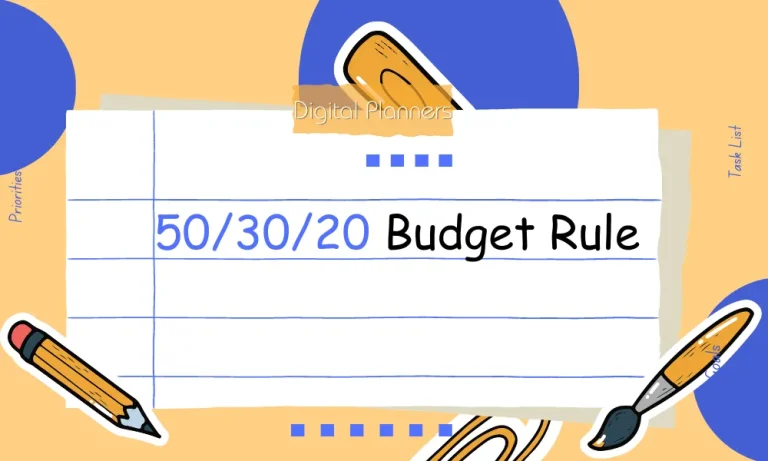Are you tired of feeling overwhelmed by your never-ending to-do list? Look no further! Introducing the Eisenhower Matrix, a game-changing productivity tool that will revolutionize the way you prioritize tasks. In this blog post, we’ll explore the power of the Eisenhower Matrix and how it can help you achieve more in less time. Get ready to unlock your true potential and conquer your day like a pro!
Understanding the Eisenhower Matrix
The Eisenhower Matrix, also known as the Urgent-Important Matrix, was named after Dwight D. Eisenhower, the 34th President of the United States. Known for his exceptional time management skills, Eisenhower emphasized the importance of distinguishing between what is urgent and what is important.
The Four Quadrants
- Important & Urgent: This quadrant consists of tasks that require immediate attention and have significant consequences if not addressed promptly. Examples include deadlines, crises, and urgent meetings.
- Important & Not Urgent: Here, you’ll find tasks that are important for long-term goals but don’t require immediate action. These tasks involve planning, strategizing, personal development, and relationship-building.
- Not Important & Urgent: Tasks falling into this quadrant are often distractions and interruptions that demand immediate attention but contribute little to your long-term goals. Examples include phone calls, emails, and certain meetings.
- Not Important & Not Urgent: This quadrant comprises tasks that are neither important nor urgent. These tasks usually involve time-wasting activities like excessive social media browsing, random internet surfing, or watching TV shows.
Benefits and Applications
The Eisenhower Matrix is a game-changer when it comes to managing tasks and priorities. Its benefits extend to both personal and professional life, aiding in decision-making and reducing stress. Let’s explore how this matrix can transform the way you approach your daily responsibilities.
The Eisenhower Matrix provides a clear framework for decision-making by helping you distinguish between what is urgent and what is important.
By focusing on important tasks, you can allocate your time and energy more effectively, leading to better decision-making and increased productivity. Moreover, by addressing tasks in a timely manner, you can prevent them from piling up and becoming overwhelming, thus reducing stress levels.
Real-Life Scenarios
- Work Projects: Imagine having multiple work projects on your plate. The Eisenhower Matrix can help you identify the most critical tasks that require immediate attention. By prioritizing these tasks, you ensure that you complete them on time and avoid unnecessary stress.
- Personal Goals: Whether it’s pursuing a new hobby, exercising regularly, or spending quality time with loved ones, the Eisenhower Matrix can assist in prioritizing personal goals. By recognizing the importance of these activities and scheduling them accordingly, you can achieve a better work-life balance.
- Daily To-Do Lists: The Eisenhower Matrix can be applied to daily to-do lists, allowing you to categorize tasks based on their urgency and importance. This enables you to tackle important tasks proactively while minimizing time spent on less significant activities.
Implementing the Eisenhower Matrix
The Eisenhower Matrix is a practical tool that can revolutionize your task management. By categorizing tasks based on their importance and urgency, you gain clarity on how to prioritize and allocate your time effectively.
Creating the Matrix
- Draw a 2×2 grid on a piece of paper or use a digital tool.
- Label the top row as “Urgent” and “Not Urgent”.
- Label the left column as “Important” and “Not Important”.
- You now have four quadrants: Important and Urgent (Quadrant 1), Important but Not Urgent (Quadrant 2), Not Important but Urgent (Quadrant 3), and Not Important and Not Urgent (Quadrant 4).
Categorizing Tasks
- Evaluate each task and determine its importance. Ask yourself if it aligns with your goals and priorities.
- Assess the urgency of each task. Consider deadlines and potential consequences of not completing them on time.
- Place each task in the respective quadrant based on its importance and urgency.
Prioritizing and Allocating Time
- Focus on Quadrant 1 tasks first. These are both important and urgent, requiring immediate attention.
- Next, allocate time for Quadrant 2 tasks. These are important but not urgent, so schedule dedicated time to work on them and prevent them from becoming urgent.
- Delegate or eliminate tasks in Quadrant 3. These may feel urgent, but they are not important to your goals. Delegate them to others if possible or eliminate them altogether.
- Finally, disregard tasks in Quadrant 4. These are neither important nor urgent, so avoid wasting time on them.
FAQs about the Eisenhower Matrix
What is the Eisenhower Matrix?
The Eisenhower Matrix is a time management tool that helps prioritize tasks based on their importance and urgency. It is a 2×2 grid that categorizes tasks into four quadrants, guiding individuals to focus on what matters most.
How do I create an Eisenhower Matrix?
Creating an Eisenhower Matrix is simple. Draw a 2×2 grid on paper or use a digital tool. Label the top row as “Urgent” and “Not Urgent,” and the left column as “Important” and “Not Important.” Place tasks in the respective quadrant based on their importance and urgency.
How can the Eisenhower Matrix help me with task management?
The Eisenhower Matrix provides a visual framework for prioritizing tasks. By categorizing tasks, you gain clarity on what needs immediate attention, what can be scheduled, what can be delegated, and what can be eliminated. It helps you allocate your time efficiently and focus on what truly matters.
What should I do with tasks in Quadrant 3 (Not Important but Urgent)?
Tasks in Quadrant 3 should be evaluated carefully. If possible, delegate them to someone else who can handle them effectively. If not, allocate the minimum amount of time necessary to complete them, ensuring they don’t overshadow more important tasks.
How often should I update my Eisenhower Matrix?
It is recommended to review and update your Eisenhower Matrix regularly. Set aside dedicated time each day or week to reassess your tasks, adjust priorities, and ensure your matrix accurately reflects your current goals and responsibilities. Regular updates help you stay on track and adapt to changing circumstances.
Conclusion
The Eisenhower Matrix is a game-changing tool that helps you prioritize tasks based on their importance and urgency. By categorizing your to-do list and allocating time effectively, you can maximize your productivity and achieve your goals with greater efficiency. Embrace this matrix and take control of your time and tasks!




